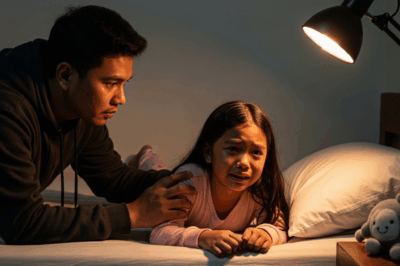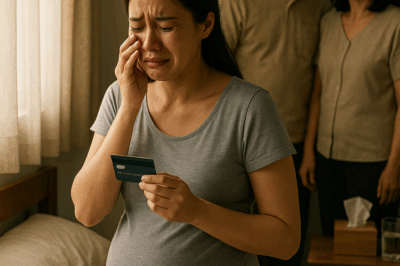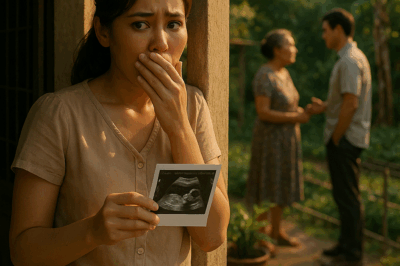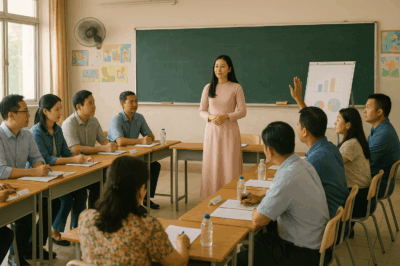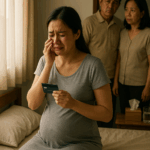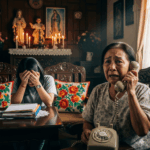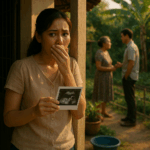‼️NEW UPDATE‼️NEGROS OCCIDENTAL MASAKERR, suspek, s!nunog ang mga biktima!! “Isang masayang pamilya ang namumuhay sa gitna ng taniman ng mais — isang trahedya — isang marahas na pag-atake na nagpagulat sa marami.”/th
Over the past three years, one of the Philippines’ main exports has come from the sugar cane industry. The cultivation or planting of corn has even been reported as one reason why the USA maintains a strong relationship with the country. Due to the booming corn planting, owners of multi-hectare cornfields have become part of the upper echelon—those considered elite.
While growing corn brings good income, some environmentalists have persistently called for restraint and warned against unchecked greed. They point out that corn farming has significantly impacted the environment. Beyond being a cause of reduced biodiversity, it is one reason millions of tons of CO₂ are released annually—contributing to global warming. Certain pesticides used also make it hard for some bird species to survive and reproduce.
Despite the environmentalists’ well-meaning goals to protect wildlife, the farmers in Negros Occidental prioritize feeding their families and easing hunger pains, even knowing the negative environmental effects. Reports show that Negros Occidental is the sugar-producing center of the Philippines—supplying around 60% of the country’s sugar. With so much land suitable for corn planting, it has become the primary source of livelihood.
So if you visit that province, it’s normal to see farmers and their carabaos (water buffaloes) working together in the fields. But like other farmers, sugar cane farmers face the same struggles as rice farmers—especially if they don’t own the land they till.
Bob Still grew up familiar with the sugar fields—he started working there even before entering elementary school to help support daily expenses. Once in school, he continued working at Hacienda Nene in Purok Pine Tree, Barangay Punanon, Sagay City. The vast land belongs to Carmen Tolentino’s family, which has owned the 75-hectare hacienda for decades. As their business grew, so did Bob’s earnings.
Eventually, Bob married Alinita and they had six children. Their small home was just a short walk from Hacienda Nene. Later, he left field work to become a mechanic and occasionally drove for the hacienda owner, Tolentino.
However, that job didn’t last long, and he had to fish to support the family. In 2018, despite their poverty, he and his wife were proud that they could still provide for their children. Their youngest, Marchdale, was a Grade 9 student at Barangay Bulanon High School.
They always told their children to strive in life. Since they were poor, they had no inheritance to pass on. So when Marchdale neared high school graduation, Bob Still felt immense joy.
But in October of that year, the struggling family suffered a tragic blow: 17‑year‑old Marchdale was massacred. At first, people thought it was a drug-related death due to the popularity of “tokhang” operations. But when they realized multiple bodies were in the wake of the teenager’s death, suspicions grew that it was a serious crime.
Bob Steel recounted that on the night of October 20, 2018, his son went to a farmers’ tent inside the hacienda where they were resting after planting, saying they had just finished working and planned to resume the next day. His son asked to use the bathroom, but before he could finish, gunshots rang out. Terrified, he ran back into the tent, hiding instead of calling out to his father. Minutes later, there were screams, crying, and more gunfire—then sudden silence.
After ensuring it was safe, Bob approached the tent to find his son and several others brutally killed. Some managed to run to the police station. The next morning, authorities cordoned off the area with yellow tape and declared it a crime scene.
According to officials, nine people were massacred—most shot at close range. The victims were identified as Eglaro Villeegas, Angel Dumagit Arsenal, Paterno Baron, René Lorencio, Morena Mendoza, Marcelina Dumagit, Romel Bandigue, and the youngest: Jomary Oghaon and Marchill Sumikad, both only 17.
Bob described that on returning from the bathroom, he saw about four armed men who mercilessly shot everyone inside the tent. A few escaped, but three were caught at a funeral, where they were also killed.
According to the police report, 85% of the body of 41-year-old Bantique was burned. Authorities theorize that the body was covered with sugarcane and doused with gasoline to ensure rapid burning—truly an act of overkill. In this photo, you can see Bob Steel showing reporters where his son was shot.
Two of his female companions were also burned, as if the perpetrators were filled with such rage that they wanted to send a brutal warning to others. As the investigation unfolded, the victims’ families were shocked, devastated, and angry. They called on the government for help in achieving justice.
Out of fear that they might be the next targets, the families decided to bury the victims in a single location—a common burial site. Authorities announced a ₱500,000 reward for anyone who could provide information leading to the resolution of the massacre.
Two days after the crime, authorities faced the media and shared that the suspects were still at large. However, they presented three theories for why the massacre occurred:
The landowner, Carmen Tolentino herself, could be the mastermind.
She may have hired a private army or gunmen to kill the victims. According to them, based on a directive from former President Cory Aquino in 1998, the 75-hectare Hacienda Nene land should have been distributed to over 40 farmers. Reporters immediately sought a statement from the landowner’s lawyer, but her assistant claimed she wasn’t in the office.
Other farmers might have committed the crime to increase their share in the land distribution by reducing the number of claimants.
The perpetrators might be rebels or anti-government groups.
The investigation revealed that the victims were members of the National Federation of Sugar Workers (NFSW), a group that advocates for farmers’ rights and land reform. According to the group, the 75 hectares should have already been distributed, as ordered by the court.
However, the Philippine National Police (PNP) warned the public not to believe the NFSW, claiming the group had ties to the New People’s Army (NPA). To the PNP, anyone helping the NPA is an enemy of the state. This led to speculation that the NFSW may have orchestrated the massacre themselves.
Authorities suggested that on October 20, the NFSW helped the farmers set up tents. The victims had only been members of NFSW for two days. The PNP theorized that once the setup was done, hired gunmen arrived later that night to carry out the massacre.
Authorities also floated the idea that the massacre was a ploy by the NFSW to tarnish then-President Duterte’s image. This accusation was strongly denied by Bayan Muna Representative Carlos Zarate. In an interview, he boldly declared that the authorities’ claims were absurd.
Zarate said the only ones to blame were the police and soldiers themselves, who quickly “red-tagged” the victims by labeling them as NPA. These were poor farm workers—burned and massacred—and now they were being blamed for their own deaths. He claimed the killings may have been driven by a desire to impress then-President Duterte, possibly in exchange for monetary rewards.
The blame game escalated when then-Agrarian Reform Secretary John Castriciones gave an interview. Farmers and NFSW members had hoped the Secretary would support them, but their jaws dropped when he blamed the victims instead. Castriciones said the victims were considered trespassers since, according to documents held by the department, the 75 hectares were not part of the land to be distributed, as it had supposedly already been awarded to 25 individuals.
Not only did he blame the victims, but he also defended the PNP and AFP. But if Castriciones thought the families would remain silent, he was mistaken. They grew even angrier. The NFSW leadership insisted they had no ties to the NPA and were only fighting for poor farmers to receive the land rightfully theirs.
They questioned Castriciones’ credibility as Agrarian Reform Secretary, pointing out that his college background was unrelated to agriculture. They also accused him of being a puppet of local politicians who were bribed by the landowners. They revealed that Castriciones might have secured his position due to powerful government connections.
They speculated that he was afraid to side with the poor victims because doing so would mean going against his former colleagues in law enforcement—since he was once a member of the police.
To prove the victims weren’t trespassers, the group presented documents from the Department of Agrarian Reform (DAR), released in 2014, stating that the 75-hectare Hacienda Nene should indeed be distributed to farmers.
They boldly called out the corruption and greed of local officials, saying they constantly delayed the land distribution through technicalities and legal maneuvering. But despite the revelations, the AFP and PNP remained unmoved by NFSW’s claims.
Three days after the massacre, this footage shows high-ranking leaders visiting the hacienda where the massacre occurred. In an interview, two chiefs claimed that the NPA was responsible for the killings, supposedly to discredit then-President Duterte’s administration.
However, on the same day, the NDF, which is allied with the NPA, denied involvement in the massacre. Instead, they blamed Duterte’s regime for the crime. As the accusations flew back and forth, even the victims—now lying in their coffins—were not spared from rumors. Rather than being shown sympathy, they were blamed for allegedly being recruited into and members of the NPA.
This prompted one relative of a victim to speak out emotionally. “It’s absolutely not true that they were being recruited into the NPA by the NFSW. In fact, the NFSW helps sugar workers understand how to process land claims under the DAR (Department of Agrarian Reform),” the family member said.
He clarified in the interview that the victims were not NPA members, and people should stop pointing fingers—there was only one entity to blame: the landowner.
After the victims were laid to rest, some of their relatives and members of supporting groups held a rally demanding justice, referring to the slain as the “Sagay Nine.”
When the autopsy report was released, a detail surfaced that confused the public. Survivor Bob Steel previously claimed he saw about four gunmen shoot and kill his companions. But according to the SOCO (Scene of the Crime Operatives), their analysis pointed to only five to seven suspects.
They did not disclose the basis for this count. The PNP claimed they had already detained some individuals on their person-of-interest list. Still, people were dissatisfied with how the case was progressing, questioning why only 5–7 suspects were identified when the survivor himself said there were nearly 40 attackers.
This led many to wonder whether authorities were hiding something. That doubt paved the way for veteran human rights lawyer Benjamin Ramos to volunteer to represent the victims’ families, even though they hadn’t hired him.
Ramos was known for refusing cases from the wealthy. Despite many opportunities to become rich thanks to his legal skills, he chose to serve the poor—farmers, agricultural workers, and small-time fishermen often overlooked by society. Every time he went to trial, it was like a “David versus Goliath” battle, as he often fought against powerful corporations and landowners to defend the oppressed.
The victims’ families were relieved to finally have someone on their side. But if you thought the case would proceed smoothly, you’d be mistaken. On October 26—less than a week after the massacre—custody of the minor witness became hotly contested.
In this police station footage, several individuals claiming to be the child’s relatives—his grandparents—arrived to take custody of the witness from the DSWD. However, the police denied the request after discovering that the two claiming to be the child’s grandparents were not blood relatives.
Then came another major blow: the victims’ lawyer, Benjamin Ramos, was gunned down by motorcycle-riding assassins outside a store in Kabankalan, Negros Island. According to witnesses, two men on a motorcycle killed him, but due to the suddenness of the incident and fear of retaliation, no one managed to get the license plate number.
Many people attended his wake. The lawyer who sought justice for the poor now needed justice himself. Things only worsened when the minor witness retracted his testimony. Once out of DSWD custody, the child’s father reported to police that his son had allegedly been kidnapped by the group Kadamay.
The police chief stated they would not point fingers yet but assured that someone would be held accountable. Eventually, the child and his mother came forward and filed a case against the PNP, claiming the police had coerced the child into blaming the NPA for the massacre.
Seven years after the incident, authorities claimed they had finally arrested the real suspects: Rene Manlangit and Rohelio Arquillo. Initially, the authorities promised they wouldn’t stop until the other accomplices were caught—but as of this recording, they’ve stopped pursuing others.
Still, the public remains skeptical. Both Rene and Rohelio are relatives of some victims and were also survivors of the massacre. They were also NFSW members. But authorities insisted they were not scapegoats. Instead, they alleged that the two recruited the victims and deliberately led the farmers to the tent for the massacre to take place.
The two were charged with murder. The pursuit of justice in this case became bloodier—besides Atty. Ramos, other supporters of the farmers were also killed: Escalante City Councilor Bernardino “Toto” Patigas, farmer leader Jose Jerry Catalogo, and human rights worker Zara Alvarez.
Due to the danger faced by anyone helping the victims’ families, no one else dared to take on the case, so it was transferred to Manila in 2019. On May 22, 2020, the DOJ dismissed the case filed by the minor’s mother against the PNP, citing lack of evidence. As of this recording, the case against the two accused is still ongoing.
News
“Every night, a little girl would wake up screaming and crying, repeating the same words: ‘No, it hurts!’ Her father, desperate, decided to investigate what was behind those nightmares. What he discovered left him frozen and forced him to call the police. The secret that came to light not only shook the family, but also uncovered something darker and unexpected.”/th
That family’s nighttime routine seemed normal to anyone. The little girl, barely eight years old, went to sleep cuddling her…
On My Wedding Day, My Ex-Wife Showed Up Pregnant to Congratulate Us — My New Wife Asked Just One Question, and What My Ex Revealed Made Me Lose Everything…/th
On My Wedding Day, My Ex-Wife Showed Up Pregnant to Congratulate Us — My New Wife Asked Just One Question,…
Because of poor health, when I became pregnant I asked for unpaid leave to rest. I then asked my parents for the 300 million dowry they had kept since my wedding, and they handed me a bank card—the account balance nearly made me faint… I had always believed that my parents truly loved me./th
Because of poor health, when I became pregnant I asked for unpaid leave to rest. I then asked my parents…
After nearly 10 years of infertility, when I finally received the good news, I collapsed upon overhearing a horrifying conversation between my husband and mother-in-law behind the house…/th
After nearly 10 years of infertility, when I finally received the good news, I collapsed upon overhearing a horrifying conversation…
I Went to a Parent-Teacher Meeting for My Child but Accidentally Discovered a Shocking Secret About My Husband of Many Years…/th
I Went to a Parent-Teacher Meeting for My Child but Accidentally Discovered a Shocking Secret About My Husband of Many…
Remarrying After 5 Years of Widowhood, A Boy Suddenly Appeared With My Late Husband’s Secret, Leaving Me in Tears…/th
Remarrying After 5 Years of Widowhood, A Boy Suddenly Appeared With My Late Husband’s Secret, Leaving Me in Tears… Today’s…
End of content
No more pages to load

